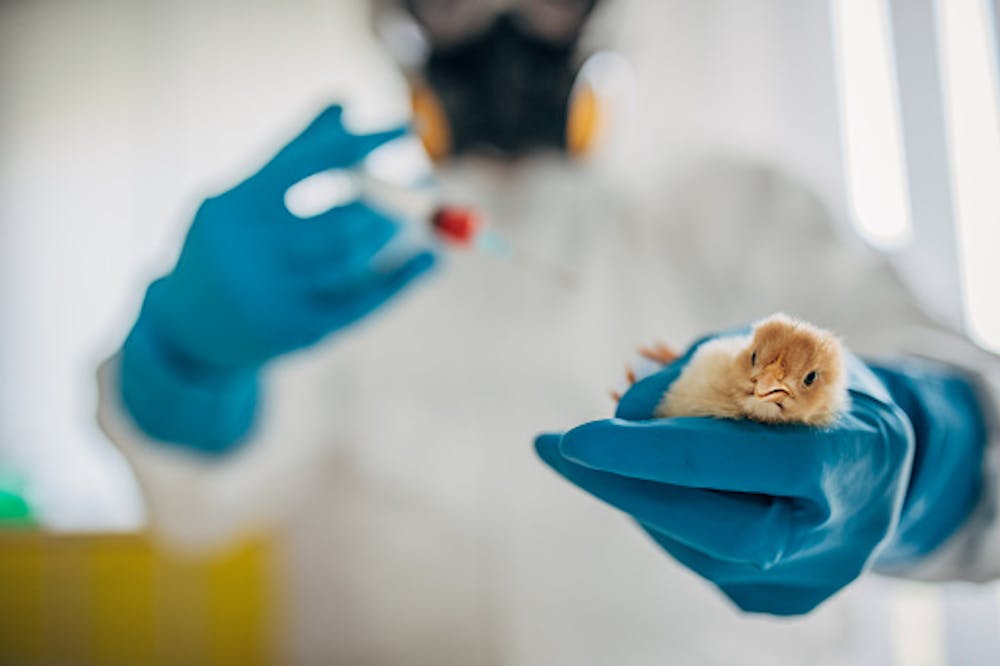By: Jackie Dutkanych
As customers in supermarkets, people have many options when it comes to purchasing raw meat. In recent years, there has been a rise in popularity of all natural, grass-fed, organic meats, as well as meat substitutes. Documentaries and novels about factory farming have brought awareness to the public of what happens to animals behind farm doors. People are now looking for brands that specify and ensure that their products are antibiotic-free, cage-free, and free range.
Antibiotics are given to animals to rapidly increase their growth, at an unnatural, unhealthy rate. The reason why farmers use antibiotics on their animals is simply to speed up the process of birth to death to market for the public to buy and consume their products. This is beneficial to the farmers because it increases the turnover rate of the animals thus bringing in more revenue. However, it raises the concerning question, are humans consuming these same antibiotics that were given to the animals?
In the 1940s, farm animals were given antibiotics only when they were sick, but by 2011 80 percent of all antibiotics used were for food-production and plumping purposes. Now, antibiotics are given to healthy chickens, pigs, sheeps and cows to increase the growth rates and maturity levels.
Giving healthy animals medicine increases the risk of drug-resistant bacteria, or superbugs. These bacteria build tolerances within an animal to the antibiotics, leaving the drug ineffective to any real illness that the animal may contract. Resistance to antibiotics can greatly increase the mortality rate among a livestock farm.
Overconsumption of antibiotics in humans results in the same issue of drug-resistant bacteria. If we are regularly supplemented with medicine, the human body thinks that this is normal and it has trouble fighting off viruses. According to the Centers for Disease Control and Prevention, superbugs are becoming a concern. In the United States alone, there are more than two million drug-resistant infections annually and 23,000 deaths due to antibiotic resistance. It is predicted that by 2050, 10 million deaths will be resulted in antibiotic resistance every year. This statistic surpasses the death rate of cancer, which is the leading cause of mortality worldwide.
After the chickens and animals have been plumped up, they go through what farmers call a “withdrawal period.” This consists of a seven to ten day time period when the chickens and pigs are taken off of antibiotics completely to clear their systems before their set kill date. Then, the animals go through the killing process and are packaged up for supermarkets to sell.
Sadly, pigs and chickens are fed five to ten times more antibiotics than larger animals like cows and sheep. The female chickens and pigs are also given too little time between births to reproduce again, causing weakened immune systems and extreme stress on the female reproductive system. Farmers feed the new piglets antibiotics as soon as they are born, and then they take the piglets completely away from their mother after two weeks.
Overseas, a Danish study found that 40 percent of all commercially sold pork meat contained the superbug MRSA, methicillin-resistant Staphylococcus aureus. This bug is resistant to antibiotics, making it hard to cure while also very contagious.
In the United States, researchers sampled 200 supermarket meats including chicken, pork, beef and turkey and found that 20 percent of the meats contained Salmonella. Over 80 percent tested positive for one or more antibiotic resistant strains.
However, there are a few things that researchers, the CDC and the World Health Organization (WHO) have all agreed on,the handling of raw meat is something that the consumers do have control over. The ideal temperature for reducing your risk is 149 degrees Fahrenheit. Cooking meat on high temperatures is found to reduce the risk of harmful bacteria like E.coli, MRSA, and Salmonella.
Enjoy what you're reading?
Signup for our newsletter
Photo courtesy of Pixabay.




